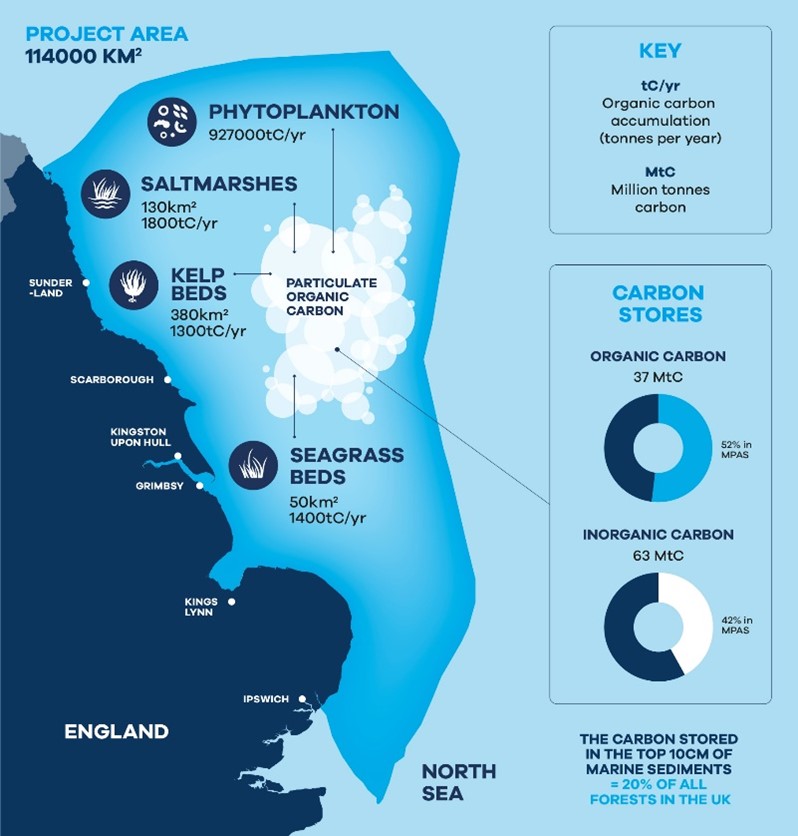December 2021
Three quarters of the UK lies beneath the sea, yet when it comes to climate policy our focus remains concentrated on the quarter of the UK above the shoreline.
Carbon is captured in the UK ocean by habitats such as saltmarsh, seagrass, kelp forests and biogenic reefs, and vast amounts of carbon is stored in marine sediments.
Recognition and protection of the sea’s contribution to the fight against climate change has not kept pace with developments on land. However, a new report, for the first time, maps and quantifies the English North Sea’s carbon assets, following in the footsteps of similar studies carried out in Scottish waters, providing an important piece of the puzzle that up to now has been missing in our understanding. The report reveals that in just the top 10cm of sediment, the study area contains roughly the same carbon as ¼ of all the UK's forests and woodlands but crucially marine sediments are likely to reach hundreds, if not thousands of meters in depth – meaning we are currently only measuring the tip of the iceberg, see image below.

The report also highlights the inadequacy of our current Marine Protected Area (MPA) network when it comes to protecting and managing ocean climate assets. Only 51.9% of the total organic, and 42.1% of total inorganic carbon in the English North Sea can be found within the existing MPA network, and almost all of these MPAs are subject to broadscale disturbance. Some areas with the greatest carbon stock density lie outside of current MPA designations and protection of these areas is urgently needed to ensure the carbon stores remain undisturbed.
Time is running out to make the changes needed to keep global temperatures below 1.5˚C, and protecting the carbon storing habitats in the ocean. Unlike other habitats, restoration of carbon stores in marine sediments is not feasible, the only way to ensure the carbon remains securely locked away is to protect these sediments from disturbance from human activities.
Looking to the future, WWF has committed to complete the mapping and quantification of ocean carbon around remaining sea areas in the UK - looking to ensure this crucial information is incorporated into national MPA discussions, as well as providing a foundation for further research towards a better quantification of the carbon sequestration potential of UK seas.
We hope that by highlighting and better quantifying the role that our ocean plays in the fight against climate change, it will stimulate the policy and management changes to ensure these critically important habitats and sediment deposition areas are protected before it’s too late.
The full report can be found here.
Penny Nelson is the Ocean Climate Advocacy Lead at WWF-UK, follow @wwf_uk. The opinions expressed in this blog are the author's and not necessarily those of the wider Link membership.

Latest Blog Posts